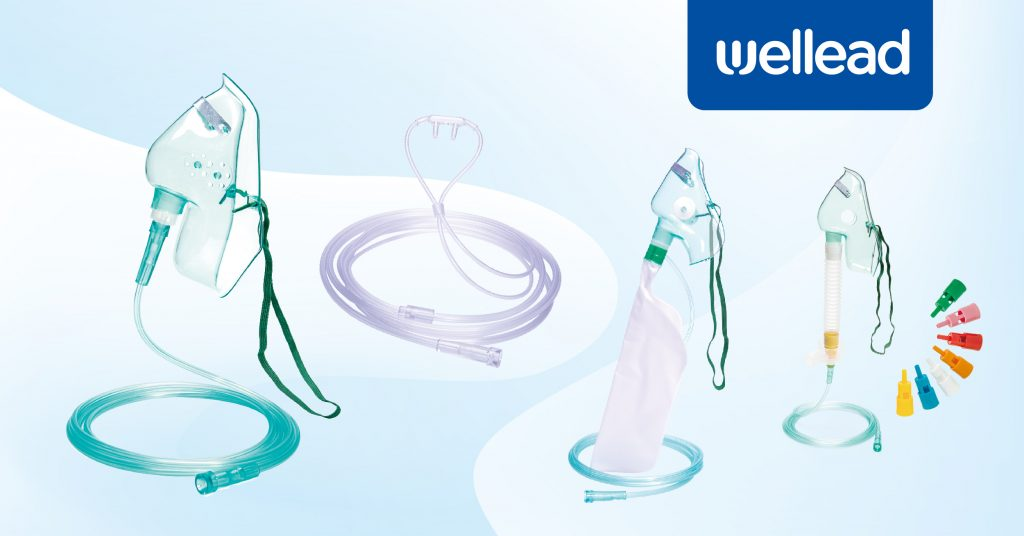Modern medicine relies on oxygen therapy to manage respiratory conditions ranging from chronic obstructive pulmonary disease (COPD) to acute respiratory distress. The oxygen supply involves critical stages: oxygen generation/storage→purification→transportation→delivery through terminal equipment (e.g., masks, cannulas)→patient inhalation.
This guide explores the types of oxygen delivery devices, their mechanisms, and clinical applications to help healthcare providers and patients make informed decisions.

Primary Types of Oxygen Delivery Devices
Oxygen therapy needs to ensure optimal oxygenation while balancing patient comfort and mobility. Respiratory device innovation has expanded treatment options, with modern systems categorized into stationary, portable, and hybrid models. Below, we analyze 7 primary oxygen therapy devices and their roles in clinical practice.
1. Central Oxygen Supply Systems
Central systems provide piped oxygen to multiple hospital beds via wall outlets. These networks connect to bulk liquid oxygen tanks or concentrators, delivering purified oxygen at adjustable flow rates.
While ideal for inpatient care, their fixed infrastructure limits use outside clinical settings.
2. Oxygen Concentrators
Oxygen concentrators extract nitrogen from ambient air, producing 90–95% pure oxygen.
- Stationary/Home oxygen concentrators suit long-term home therapy, offering flows up to 10 L/min.
- Portable oxygen concentrators (POCs) typically deliver 2–5 L/min and offer mobility through battery power.
According to multiple industry reports, oxygen concentrators are considered one of the fastest-growing categories in the future due to their high energy efficiency and declining costs.
3. Compressed Gas Cylinders
These pressurized metal tanks store oxygen in gaseous form. Small portable cylinders (e.g., 3 kg weight) serve as emergency backups or ambulatory solutions but require frequent refills. Large static cylinders can weigh up to 18 kg.
Compared to oxygen concentrators, compressed gas cylinders incur higher long-term costs due to logistics and gas waste during exhalation.
4. Liquid Oxygen Systems
Liquid oxygen reservoirs store O₂ at -183°C, offering higher capacity than gaseous systems. Though lightweight for portable use, evaporation losses and specialized handling limit their adoption to niche applications.
5. Oxygen Masks
Different types of oxygen masks cater to varying clinical needs:
- Simple Face Masks: Deliver 35–60% FiO₂ at 5–10 L/min but lack precision.
- Venturi Masks: Use color-coded valves for exact FiO₂ (24–60%), ideal for COPD patients.
- Non-Rebreather Masks: Reservoir bags provide >90% FiO₂ for acute hypoxia.
You can learn more about different types of oxygen masks here: Oxygen Therapy and Delivery: How Medical Oxygen Masks Work.
6. Nasal Cannulas
The nasal cannula oxygen delivery system remains the most common low-flow device, delivering 24–44% FiO₂ at 1–6 L/min. Its lightweight design enhances comfort for long-term use but risks mucosal dryness at higher flows.
High-flow nasal cannula (HFNC) is an upgraded oxygen delivery system based on this structure, and it is used in the treatment of acute respiratory failure.
7. Transtracheal Oxygen Catheters
Transtracheal oxygen catheters (TTOCs) refer to fine catheters inserted into the nasopharynx or trachea to bypass upper airway resistance and improve oxygenation. They are used in patients with severe COPD and were more commonly seen in earlier years. However, infection risks and maintenance demands limit their use in specialized cases.
More Oxygen Therapy Accessories
Oxygen Tubing
While oxygen catheters directly interface with the trachea, oxygen tubing connects devices to masks/cannulas. Ensuring it is free of kinks and properly secured is crucial.
Humidifiers
When oxygen flow is high or prolonged, dry oxygen can irritate the respiratory tract, causing dryness and bleeding. A humidifier adds moisture to the oxygen, keeping the airway mucosa moist, reducing irritation, and improving patient comfort.
Selecting the Appropriate Types of Oxygen Delivery Devices
1. Clinical Needs Assessment
- Mild Hypoxia (SpO₂ 90–94%): Low-flow nasal cannula oxygen delivery or simple masks.
- Moderate Hypoxia (SpO₂ 85–89%): Venturi masks or HFNC.
- Acute Respiratory Failure: HFNC, Non-rebreather masks, or mechanical ventilation with FiO₂ titration.
2. Portability and Comfort
Active patients benefit from portable concentrators or liquid oxygen systems, whereas stationary concentrators suit homebound individuals. Pediatric and geriatric populations often prioritize mask comfort over flow rates.
3. Cost and Maintenance
Consider the initial cost, ongoing expenses (e.g., refills, electricity), and the device’s maintenance requirements.
Well Lead Medical’s Oxygen Delivery Solutions
Well Lead Medical offers various types of oxygen delivery devices to meet diverse patient needs. Our product line includes high-quality nasal cannulas, oxygen masks, catheters, and tubing solutions for reliable and comfortable oxygen therapy. These respiratory devices are designed for durability and high performance, making them ideal for use in both clinical and home settings.
- Oxygen Mask
- Non-Rebreath Mask
- Multi-Vent Mask
- Adjustable Venturi Mask
- Tracheostomy Mask
- Nasal Oxygen Cannula
- Oxygen Catheter
- Oxygen Tubing
For more details, welcome to contact us directly.
As one of the main global manufacturers of medical catheters, Well Lead Medical collaborates with over 100 medical device distributors worldwide. With ISO-certified production lines ensuring compliance with global safety standards and ergonomic designs enhancing patient comfort, our devices are trusted for their quality and safety.
References:
https://pmc.ncbi.nlm.nih.gov/articles/PMC6876135
https://www.imarcgroup.com/portable-oxygen-concentrators-market

